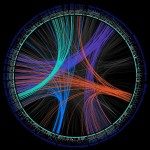Lien vers Pubmed [PMID] – 32589725
Lien DOI – msaa15610.1093/molbev/msaa156
Mol. Biol. Evol. 2020 Jun; ():
The Roma Diaspora – traditionally known as Gypsies -remains amongst the least explored population migratory events in historical times. It involved the migration of Roma ancestors out-of-India through the plateaus of Western Asia ultimately reaching Europe. The demographic effects of the Diaspora – bottlenecks, endogamy, and gene flow – might have left marked molecular traces in the Roma genomes. Here, we analyze the whole genome sequence of 46 Roma individuals pertaining to four migrant groups in six European countries. Our analyses revealed a strong, early founder effect followed by a drastic reduction of ∼44% in effective population size. The Roma common ancestors split from the Punjabi population, from -Northwest India, some generations before the Diaspora started, less than 2,000 years ago. The initial bottleneck and subsequent endogamy are revealed by the occurrence of extensive Runs of Homozygosity and Identity By Descendent segments in all Roma populations. Furthermore, we provide evidence of gene flow from Armenian and Anatolian groups in present-day Roma, although the primary contribution to Roma gene pool comes from non-Roma Europeans, which accounts for more than 50% of their genomes. The linguistic and historical differentiation of Roma in migrant groups is confirmed by the differential proportion, but not a differential source, of European admixture in the Roma groups, which shows a westward cline. In the present study we found that despite the strong admixture Roma had in their diaspora, the signature of the initial bottleneck and the subsequent endogamy is still present in Roma genomes.

